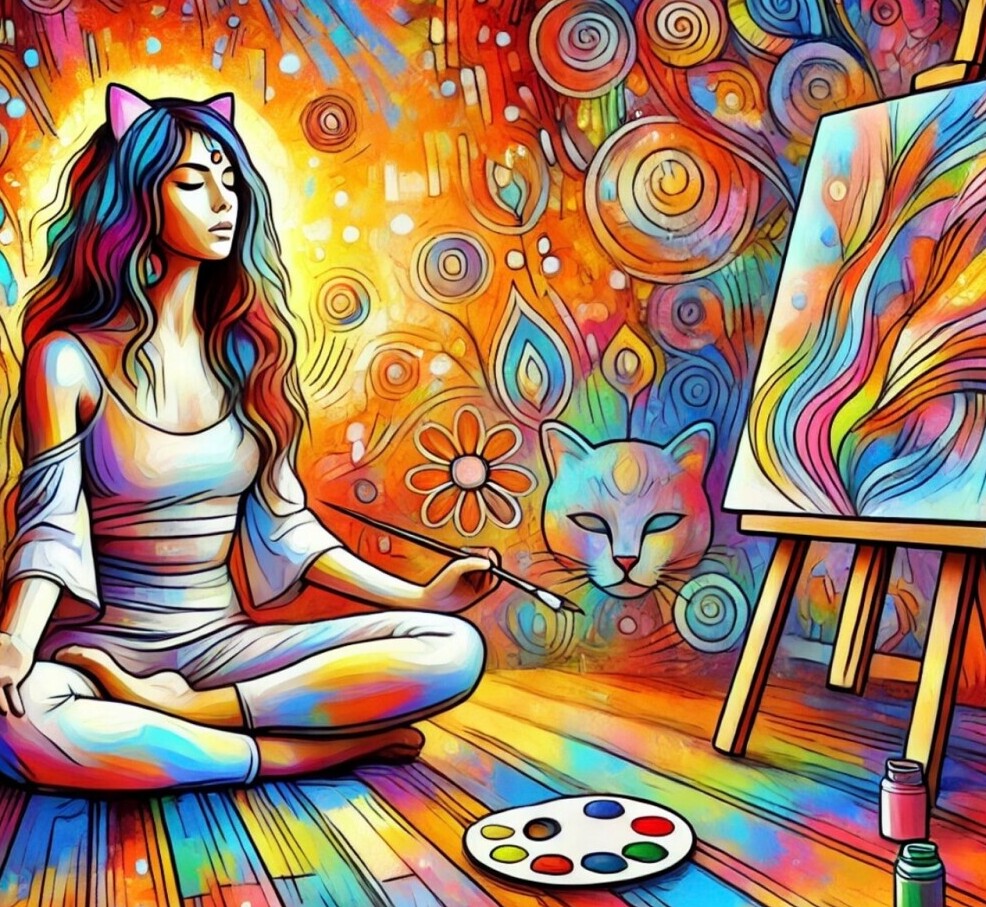
Meditative art isn’t just about creating something beautiful; it’s about finding a sense of peace and grounding within yourself. This practice allows you to focus on the moment, getting lost in the flow of lines, shapes, and colors.
Creating art can work wonders on stress and anxiety. When you’re in the zone, your brain eases up on the overthinking and stress levels drop. Think of it as giving your mind a much-needed break from the usual hustle. The act of drawing and being present can feel almost like a mini-vacation.
Countless stories out there speak volumes about the power of meditative drawing. Take, for instance, Jane, an overworked teacher who found solace in sketching. She swears by it, saying it kept her grounded when everything else felt chaotic. Personal experiences like hers underline how transformative this practice can be.
There’s a special link between art and mindfulness. When you draw mindfully, you’re not just making art; you’re practicing mindfulness. This means paying attention to your breathing, the movements of your pencil, and how your body feels during the process. It’s about living in the moment and appreciating every stroke and shade.
Techniques and Practices in Meditative Drawing
Exploring different methods of meditative drawing offers a fun way to find what works best for you. Zentangle, for instance, is all about creating intricate patterns with repetitive strokes. It’s simple, yet profoundly calming. Another favored practice is drawing mandalas, those circular designs that can range from simple to highly complex. Each technique has its unique charm, allowing you to get into a tranquil state.
Starting with meditative drawing doesn’t require a ton of fancy gear. A pencil, some paper, and a desire to relax are all you need. For Zentangle, fine-tipped pens are awesome for detailed work, while colored pencils or markers make mandalas pop. Whichever tool you choose, let your creativity flow without worrying too much about the outcome.
When you sit down for a meditative drawing session, think about incorporating some breathing exercises. Deep breaths can help settle your mind before you start. Focus on the inhale and exhale, letting the rhythm guide your hand as you begin to draw. This combo of deep breathing and sketching can provide a deeper sense of relaxation.
Setting the mood can make a big difference. Find a comfy spot with good lighting and minimal distractions. Playing some calming music can also help you stay in the zone. Once you’re set up, start drawing at your own pace, letting each stroke bring you a little bit more peace.
Incorporating Meditative Art into Daily Life
Setting aside a special spot at home for meditative art can help make it a regular part of your routine. It doesn’t have to be anything fancy – a corner of a room with your favorite supplies works nicely. Just knowing you have a dedicated space for creativity can make a world of difference.
Consistency is key when it comes to making meditative art a habit. Try setting small, achievable goals, like drawing for ten minutes each day. It’s not about quantity but quality. Even a tiny daily session can bring noticeable benefits to your mental well-being.
Balancing between digital and traditional drawing methods can keep things fresh and interesting. Digital drawing apps offer endless possibilities, from different brushes to colors that you might not have at home. Meanwhile, the tactile experience of traditional methods – feeling the texture of the paper and the pressure of the pencil – can be equally rewarding. Mixing both approaches gives you the best of both worlds.
Sharing your work with friends or online communities can be super gratifying. It’s a great way to connect with others who have similar interests. Plus, seeing how others approach their meditative art can provide fresh ideas and inspiration. Your journey could motivate someone else to start their own meditative art practice.
